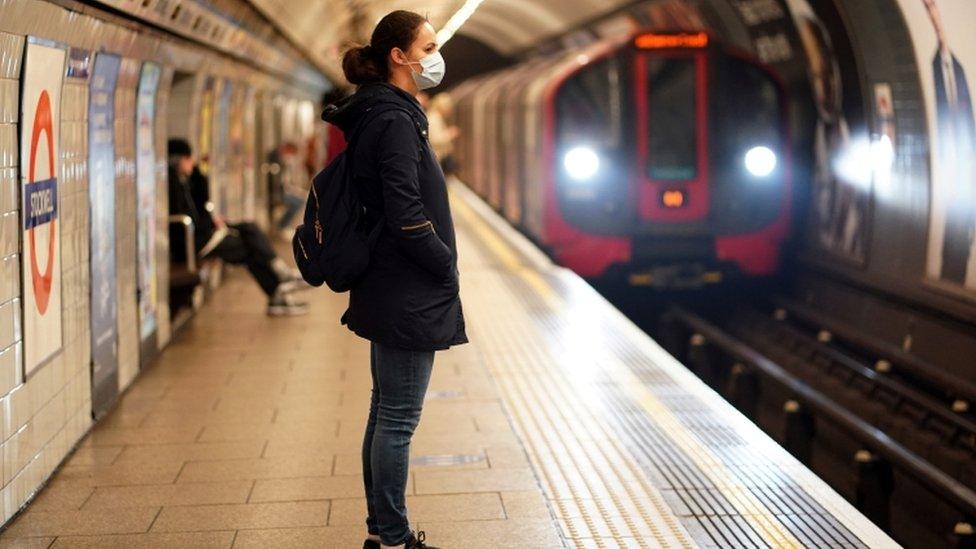London Underground: Tube and bus fares see biggest hike in a decade
- Published
- comments

Passengers numbers have been gradually rising since facing dramatic falls during the pandemic
Tube and bus fares are to be increased by an average of almost 5%, London Mayor Sadiq Khan has announced.
The hike matches the current inflation rate and is the biggest annual jump in Transport for London (TfL) fares in a decade, when Boris Johnson was mayor.
Single Tube fares using Oyster or Contactless tickets will rise by 10p in Zone 1 and between 10p to 30p across the rest of the Underground network.
Mr Khan said he had done everything "to keep fares as affordable as possible".
The fares will rise from 1 March and see an increase across all TfL services averaging at 4.8%, Mr Khan said.
The move is in line with government orders as part of TfL's bailout conditions, driven by the need to rebuild its finances following the Covid pandemic.
The last time fares rose on this scale was when Mr Johnson increased them by almost 6% in 2012, external.

Key changes:
Pay-as-you-go Tube fares in Zone 1 up 10p to £2.50
Hopper bus fare that allows multiple journeys within an hour increases 10p to £1.65
Daily cap on multiple pay-as-you-go Tube journeys rises 3.8%
Daily cap on bus journeys up 30p to £4.95
Emirates Cable Car up 25% to £5, with return tickets axed
Minimum cash fare on the Tube up 80p to £6.30

Mr Khan held TfL single pay-as-you-go prices in his first four years as mayor as part of his "fares freeze" policy.
But he increased them by an average of 2.6% in March last year.
"Since TfL's finances were decimated by the pandemic, the government has set strict conditions as part of the emergency funding deals to keep essential transport services running in London," Mr Khan said.
Related topics
- Published4 October 2021

- Published27 October 2020
